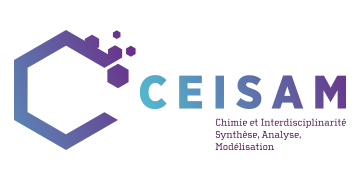The MIMM team of the Laboratory has just designed an innovative method for isotope analysis at natural abundance, based on NMR (1).For the first time, this approach is evaluated according to the criteria of green analytical chemistry.
The method developed by scientists from the MIMM team consists of using the 2D HSQC NMR sequence, modified to achieve a standard deviation of repeatability of less than 1‰ (precision required for a 13C/12C isotopic ratio analysis), on a low amount of product. The demonstration was made on 10 mg of a glucose derivative (quantity which makes it possible to analyze the fate of glucose during different metabolisms, including that of photosynthesis). In addition to the interest of the proposed analytical protocol, what should attract attention is the part concerning its evaluation according to the criteria of green analytical chemistry (2). In recent years, 12 principles have been specified on the practice of analytical chemistry so that it meets society’s expectations on the sustainable aspect of any process resulting from human activity. This type of evaluation is in strong development in the scientific community of analytical chemistry and it is a first for the team and CEISAM. In the article, the estimation of the level of agreement with green chemistry was carried out in a qualitative way, but the next step will include a positioning according to a quantitative scale (3), and even more so the “sample preparation” part (4) will have to focus all our attention.
In a context of sustainable development, the approach of including a reflection of the impact of the analytical method developed and validated, based on identified and quantifiable criteria, must become ordinary and systematic.
1) S. Renou et al., NMR-Based Method for Intramolecular 13C Distribution at Natural Abundance Adapted to Small Amounts of Glucose. Anal. Chem., 2023, 95, 10540.
(2) A. Galuszka et al., The 12 principles of green analytical chemistry and the SIGNIFICANCE mnemonic of green analytical practices. Trends in Analytical chemistry, 2013, 50, 78.
(3) J. Płotka-Wasylka and W. Wojnowski, Complementary green analytical procedure index (ComplexGAPI) and software. Green Chem., 2021, 23, 8657.
(4) A. I. Lopez-Lorente et al., The ten principles of green sample preparation. Trends in Analytical Chemistry, 2022, 148, 116530.
(5) J. Płotka-Wasylka et al. Green analytical chemistry as an integral part of sustainable education development. Current Opinion in Green and Sustainable Chemistry, 2021, 31, 100508.


